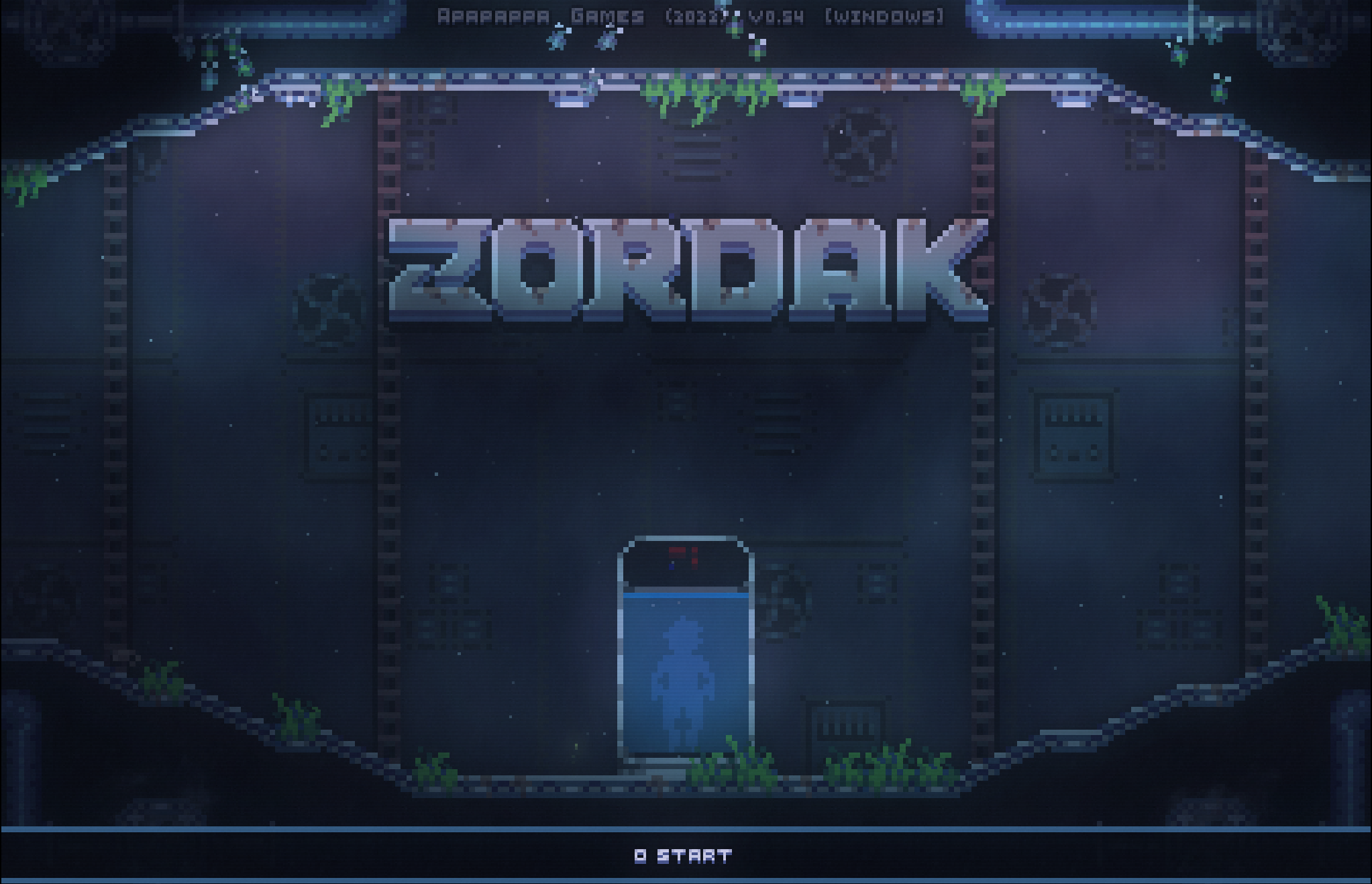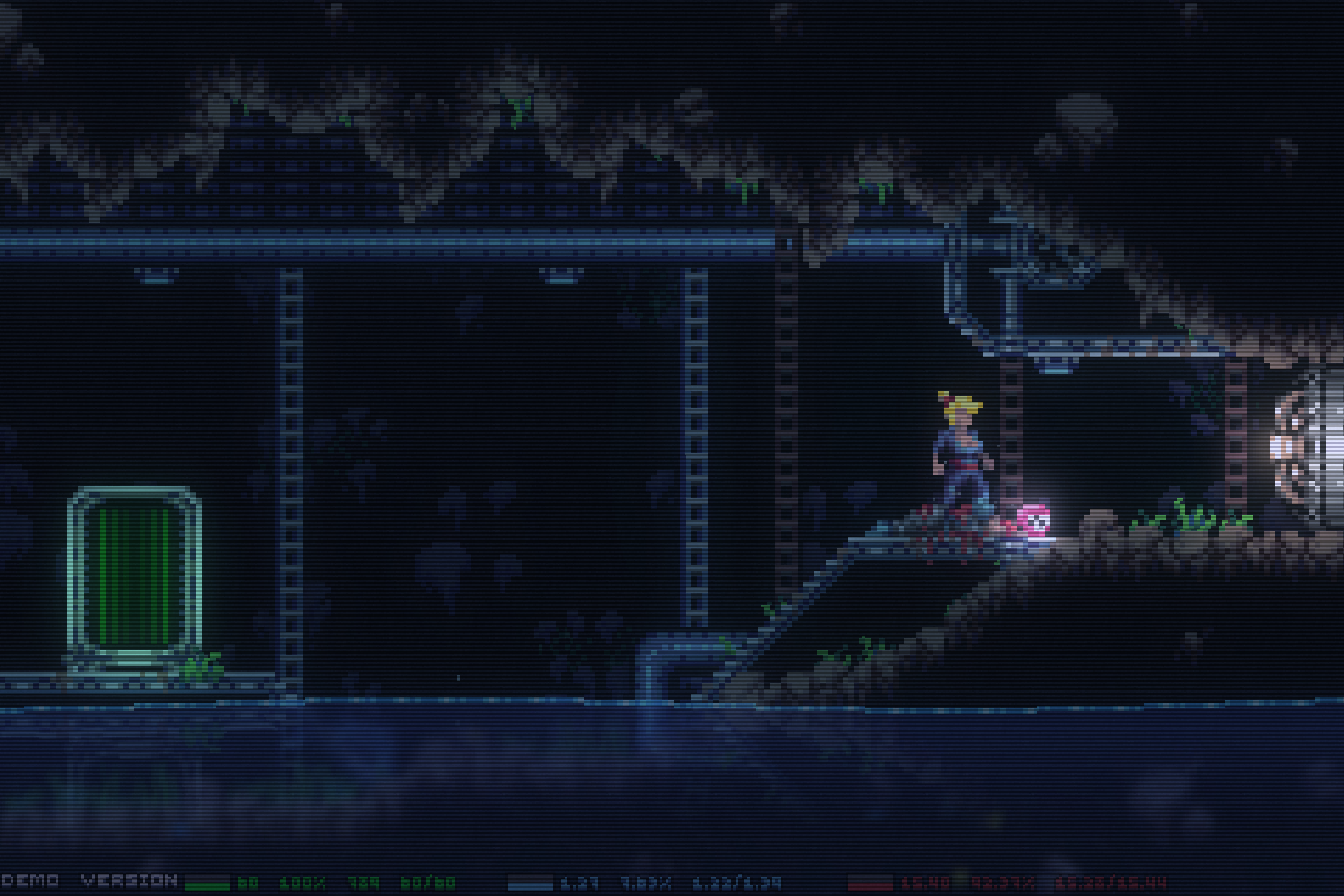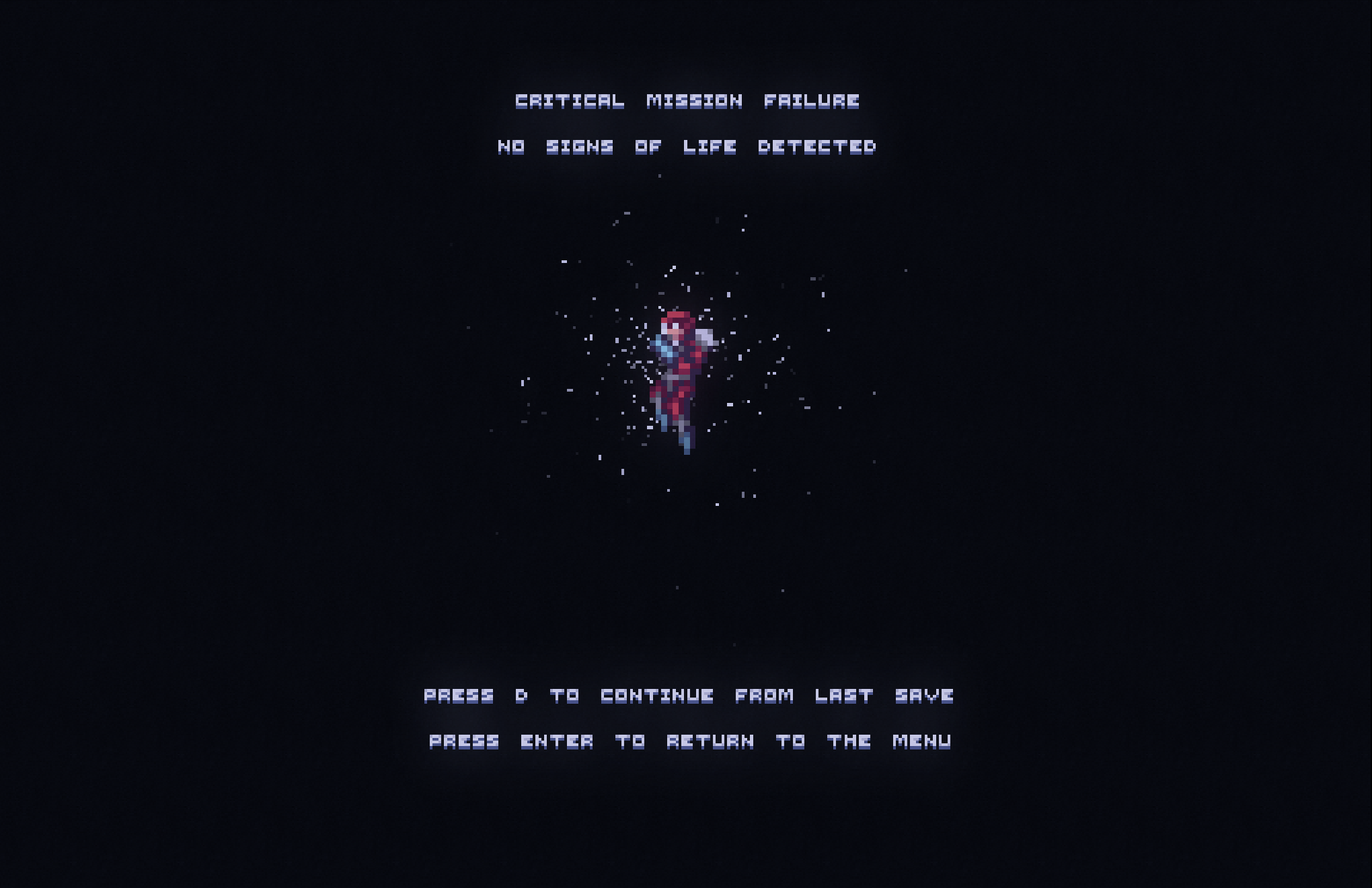An Intro to Zordak
Zordak is an indie game being developed by indie developer Apapappa Games, posted on Itch.io. The game is inspired by games like Super Metroid, and is available as a demo here! I'm going to be using a kumu network to visualize some of the elements of the game that I have encountered, and use it to to look deeper into the game and review it.
A Look Into the Game
When starting Zordak, players are put into the shoes of an unnamed character who is apparently searching for other human life on the planet Zordak. the mission started as an investigation on the planet, and travelling there required the player's character to enter cryosleep. Errors occurred and the player ended up being in cryosleep for 200 years. They woke up in a state of confusion as the only remianing member on Station X, the ship they were traveling on. The player is left to wonder where other sentient life is, ultimately leading them to discover some of the enemies that appear in the game.

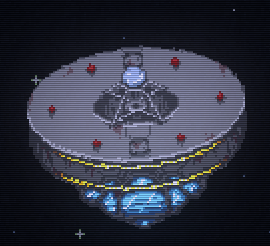
As the player continues to play Zordak, they can discover various forms of puzzles, enemies, and environments that help tell the story. There are no people around, only destroyed remnants of Station X, the plant life found on the surface of the planet, and a tutorial drone that dies and doesn't last very long. The player goes through many different areas, utilizing save points to keep track of progress if the player dies to various enemies and hazards around the map. Inside Station X, the player can find security drones, hanging wires that spark and do damage, and poisonous water that harms the player. On top of all of that, in order to leave Station X, the player must trigger a meltdown and quickly find a way out of the soon-to-explode station.
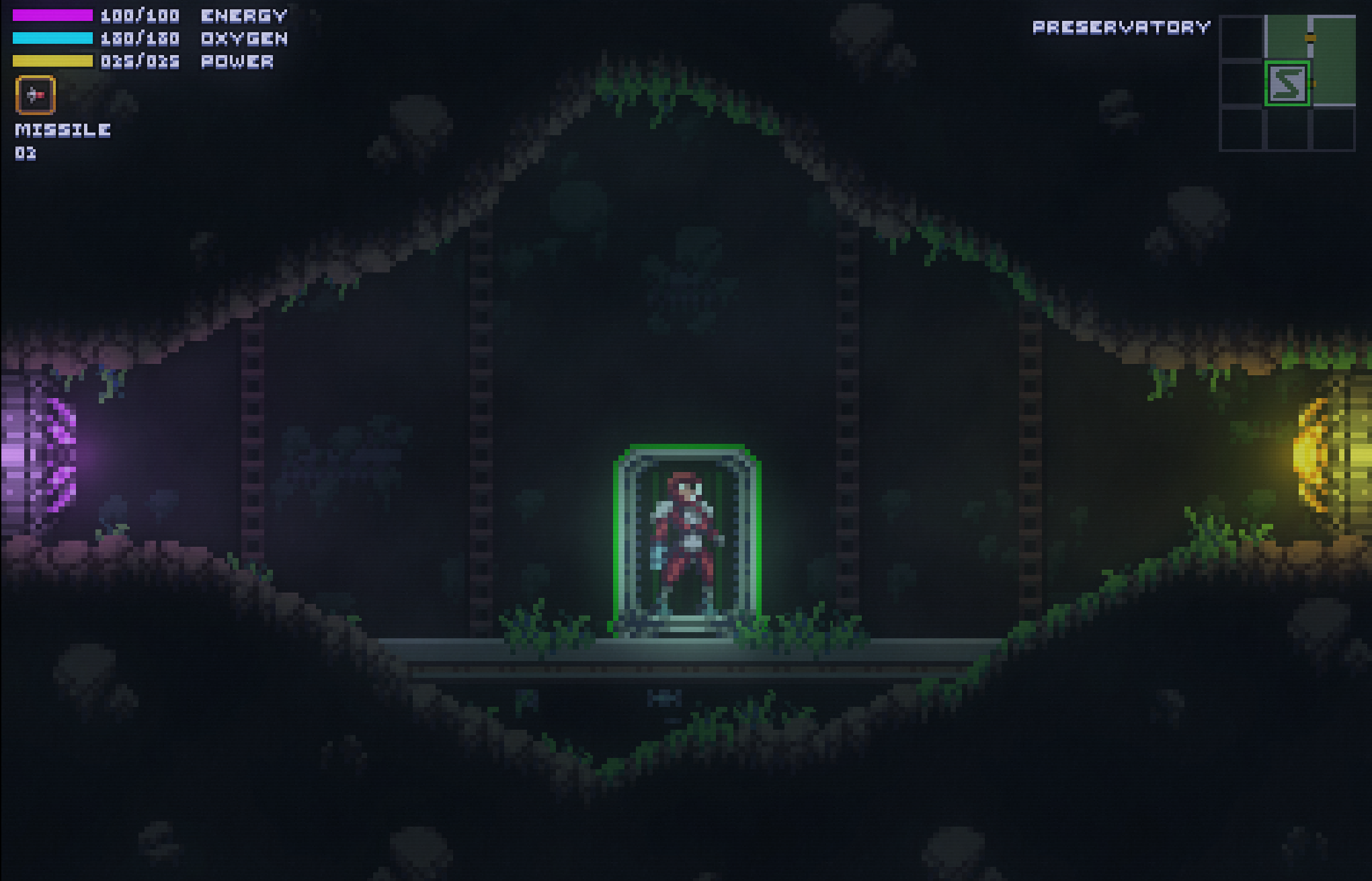

Over the course of the player's journey, they will find weapons and equipment that helps them, and even changes how the game is played. The game changes the most when the player unlocks the Geo Suit, a power-armor type suit that gives the player access to a ranged weapon called the energy beam, and eventually a missile as well. The suit also gives the player the ability to retain oxygen in areas where the air is not breathable. Instead of kicking enemies as a standard, it gives the player a higher damage dealing and more consistent weapon that proves itself to be valuable against enemies.



The various nameless enemies act as obstacles that hold back the real challenge: bosses. When progressing through areas, bosses serve as a final point that needs to be beaten before the game can be progressed further. It is the real challenge given to the player. The bossess have a specific pattern that can be memorized in order to defeat it. Only through adversity and determination can they be beaten.
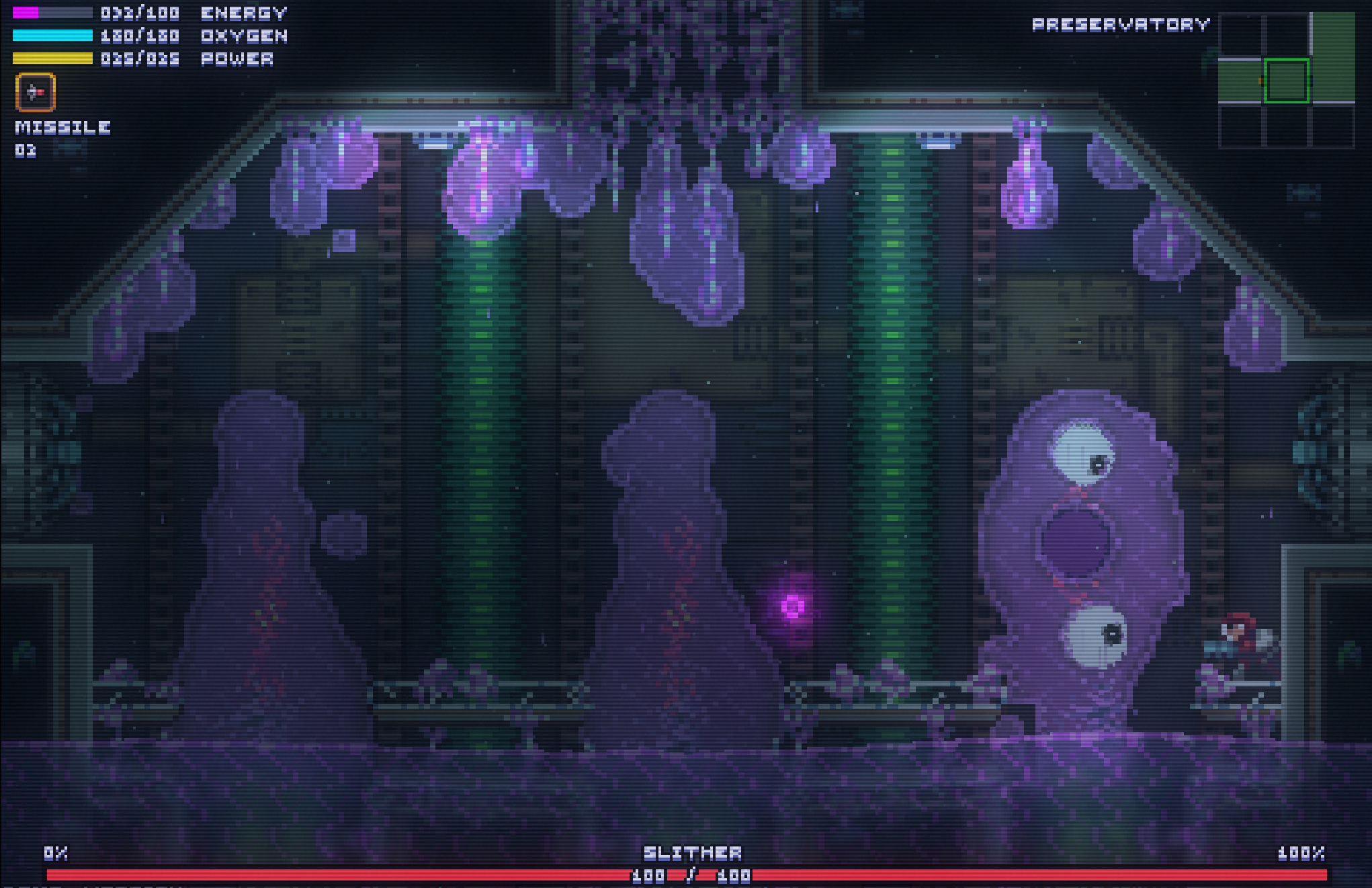
Kumu Network
One major detail that can help players understand the game based off of the Kumu Network is that the root of everything is based on the planet Zordak. At first glance of the network, it can be noticed that there is mystery in what is happening, and I think that ties in with the fact that players are faced with mystery when they begin a new save on Zordak. There is no immediate direction other than to find human life. In my adventures in the game so far, I have not discovered other life at all, except for the ones that try to kill me. So when looking at the Kumu Network, there is an absence of life outside of enemies, as it is reflective of my journey so far in the game.
There is a noticeable connection between all of the equipment that is found around the map. Upon a closer look at my network, it can be seen that equipment is found in different areas, along with enemies. This shows the progression that a player sees as they go through the game. For example, if starting at the node "geo suit" it can be traced through different connections to show what it is, which in this case is a weapon, and where it was found, which happens to be in Exterra. This can be done for any node on the network, allowing the complete progression of the game and where the player goes.
Game Review
I have enjoyed my experience with Zordak thus far. I have not completed it yet, but I can provide insight on what the game plays like, and how it functions as a whole. I am going to discuss the gameplay, narrative, and visual looks, along with any other important element that is worth bringing into the spotlight.
Firstly, the gameplay is very enjoyable. It has a lot to offer for me in the types of games I like to play. Being able to explore a small area and then fight a challenging boss is very fun to me. In terms of pacing, it felt nearly perfect. I explored throughout the tutorial, learned the basics of the game mechanics, found my basic equipment, and got an understanding of the puzzle system. Then, after encountering a newer range of enemies that were not available before I obtained my suit, I came across an area that just had "boss" written all over it. The areaa was near a save point, and as I progressed through the few rooms, there was a change in the atmosphere. The air seemed off, there was a gelatinous substance dripping from the ceiling. Then I entered one specific room and all was quiet except the dripping of the gelatinous slime. A boss named Slither appeared. The atmospherics leading up to the boss fight were truly immersive and kind of put me in a position to be unsure and questionable about what is coming. That's my experience progressing through the game, but even as I felt immersed and involved in the game at this point, there is more to discuss about the gameplay.
As previously stated, the gameplay, which includes the journey I've had so far, is very interesting and enjoyable. There are downsides, though. As a PC game, I do not particularly like the default controls. This is a subjective matter, but the controls felt awkward at times. It was purely based on keyboard use, and there was no option for using a mouse. If I could use a mouse, the combat and movement would be easier for me, as opposed to trying to manually aim in intervals. However, in the case of controller support, I think that the current movement system would work just fine. I also found it bothersome that I cannot jump and attack at the same time. Many times during the Slither boss fight, I tried to jump to dodge while trying to maintain the amount of damage I took. To me, the game appears to be a game where the player is meant to keep moving, but if I cannot output damage, then I end up standing still as I fight with some controls. This did not make the game unplayable, though. It is subjective, and more practice and time getting used to the controls could solve this issue on the player's end. Other than that, finding new equipment and exploring areas until encountering a boss is a very fun and exciting realm of gameplay.
The narrative for the game is very intriguing. There is not much given away at the beginning, letting the player indulge the mystery and incite them to continue playing to figure out the story. After being crash landed on a planet they were meant to explore, the player exits cryosleep long after the time they were supposed to, and everything is in ruin. The player's task is to find human life, and that's enough to keep the player playing. I kept finding myself anticipating moving on from an area in favor of finding more narrative to uncover. The only issue that I have with this system is that it would be cool if there were things such as collectible that tell a story related to the main one. Once I figured out that there was nothing to explore for, I left exploration behind so that I may experience a more interactive part of the game -- combat. Essentially, the game prides itself on mystery, and that is great. It makes me, as a player, want to know the answers to the questions given to me.
Visually, the art style is amazing to me. I like art styles that follow rules and make themselves unique at the same time. The visual look to Zordak felt familiar, but brand new at the same time, and that's because the game focused on building the environment so much. From looking at the inner ruins of the ship to the overgrown parts of Exterra, the game looked and felt unique in every area I had explored. The sound design felt immersive and fun. The game also had these scan lines as a filter over the game to give it a sort of monitor-like look that I really enjoyed. It reminded me of the film grain and damage in the game Cuphead, which I loved very much. It felt like it was more unique and added to the retro kind of visual style that the game was going for. Overall, the visuals and designs of all of the assets were amazing and super dynamic, especially when the wind blows them around and other events happen around the map.
Screenshot Gallery
